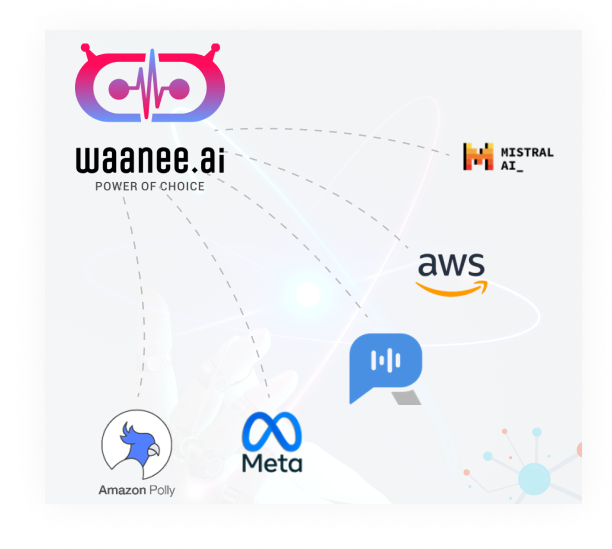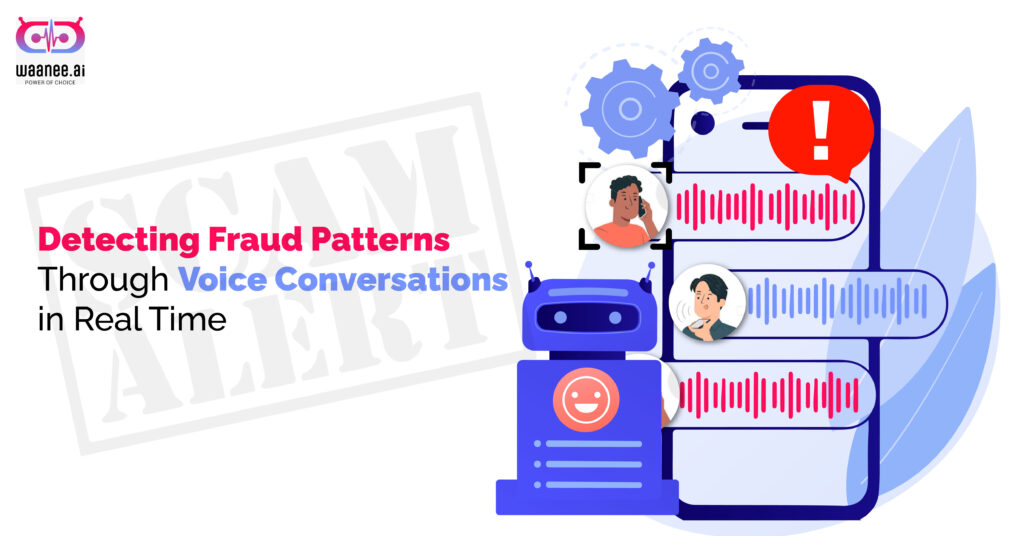
-
Waanee AI Labs
View All »

Get The Latest
Step-by-Step Guide to Migrating from Legacy IVR to Agentic IVR
Read More »How AI-Powered IVR Personalizes Customer Journeys in Real Time
Read More »Why Static IVR Menus No Longer Work in the Age of AI
Read More » - Blog
Detecting Fraud Patterns Through Voice Conversations in Real Time
Posted by Vishal Vanwari, on 03 Jul, 2025 11:09 AM

The rise of sophisticated fraud schemes has pushed organizations to develop increasingly advanced detection methods. While traditional approaches focus on transactional data and digital footprints, a powerful new frontier has emerged: real-time voice analysis. By examining speech patterns, vocal characteristics, and conversational behaviors during live interactions, businesses can now identify potential fraud attempts as they unfold.
The Voice Advantage in Fraud Detection
Voice analysis offers unique advantages over conventional fraud detection methods. Unlike digital transactions that can be manipulated or automated, human speech carries inherent biological and psychological markers that are difficult to replicate. When someone attempts to deceive, their voice often betrays subtle changes in stress levels, cognitive load, and emotional state that trained systems can detect.
Real-time voice analysis operates on multiple dimensions simultaneously. Acoustic features such as pitch variation, speech rate, and vocal tremor provide physiological indicators of deception. Linguistic patterns, including word choice, sentence structure, and hesitation patterns, reveal cognitive strain often associated with fabricating information. Behavioral markers like interruptions, topic avoidance, and response timing add another layer of detection capability.
Key Fraud Indicators in Voice Patterns
Several vocal characteristics commonly emerge during fraudulent conversations. Elevated pitch and increased vocal tension often indicate stress associated with deception. Irregular speech patterns, including unusual pauses, stammering, or rushed delivery, suggest cognitive overload as the speaker constructs false narratives. Changes in speaking volume or pace mid-conversation can signal discomfort with specific topics or questions.
Linguistic analysis reveals additional fraud indicators. Fraudsters frequently use distancing language, referring to events in passive voice or third person to psychologically separate themselves from their claims. Overuse of qualifying phrases like “honestly,” “to tell you the truth,” or “I swear” paradoxically indicates potential deception. Vague responses, circular explanations, or difficulty providing specific details about supposed experiences also raise red flags.
Technology Behind Real-Time Analysis
Modern voice fraud detection systems leverage advanced machine learning algorithms trained on vast datasets of authentic and fraudulent conversations. Natural language processing engines analyze semantic content while acoustic models examine vocal characteristics. Deep learning networks identify complex patterns that might escape human detection, processing multiple indicators simultaneously to generate risk scores.
These systems integrate seamlessly with existing communication infrastructure, analyzing calls as they occur without disrupting the conversation flow. Cloud-based processing enables real-time analysis even for high-volume operations, while edge computing solutions provide low-latency detection for time-sensitive scenarios.
Industry Applications
Financial institutions have been early adopters of voice-based fraud detection, using it to identify suspicious loan applications, insurance claims, and account verification calls. Call centers employ these systems to flag potential social engineering attempts or account takeover fraud during customer service interactions. Healthcare organizations use voice analysis to detect fraudulent benefit claims or prescription requests.
Law enforcement agencies increasingly rely on voice analysis for investigative purposes, analyzing recorded conversations for deception indicators. The technology proves particularly valuable in cases involving financial crimes, where suspects may appear cooperative while providing misleading information.
Challenges and Considerations
Despite its effectiveness, voice-based fraud detection faces several challenges. Cultural and linguistic variations can affect accuracy, requiring systems trained on diverse datasets. Medical conditions, medications, or emotional states can produce false positives by mimicking stress indicators. Privacy concerns necessitate careful implementation to ensure compliance with recording and analysis regulations.
The technology must also contend with sophisticated fraudsters who may attempt to manipulate their vocal patterns or use voice synthesis technology. Continuous system updates and training help maintain effectiveness against evolving fraud tactics.
Future Developments
Emerging technologies promise to enhance voice-based fraud detection capabilities. Emotional AI can better interpret subtle emotional cues that indicate deception. Integration with biometric voice identification adds another authentication layer. Real-time language translation enables fraud detection across language barriers.
The convergence of voice analysis with other detection methods creates powerful multi-modal fraud prevention systems. Combining voice patterns with behavioral biometrics, transaction analysis, and device fingerprinting provides comprehensive fraud protection.
Conclusion
Real-time voice analysis represents a significant advancement in fraud detection technology. By examining the subtle vocal and linguistic indicators that accompany deception, organizations can identify potential fraud attempts as they occur. While challenges remain, the technology’s ability to detect fraud patterns invisible to traditional methods makes it an increasingly valuable tool in the fight against financial crime. As systems become more sophisticated and accurate, voice-based fraud detection will likely become standard practice across industries where trust and authenticity matter most.
Revolutionize CX
with AI power
Delivers personalized interactions and immediate, data-driven solutions powered by AI, transforming customer experiences.

We use cookies!
We use cookies to ensure that we give you the best experience on our website.
By continuing to use this site, you accept our use of cookies. Learn more
 Recruit Industries Agents
Recruit Industries Agents Build Your Agent
Build Your Agent Improve Self Service
Improve Self Service Employee Experience
Employee Experience Sales and Cross Sales
Sales and Cross Sales Calling Script
Calling Script Integration & APIs
Integration & APIs Auto Summarization
Auto Summarization Conversational Intelligence
Conversational Intelligence Sentiment Analytics
Sentiment Analytics Auto QA
Auto QA Net Promoter Score
Net Promoter Score